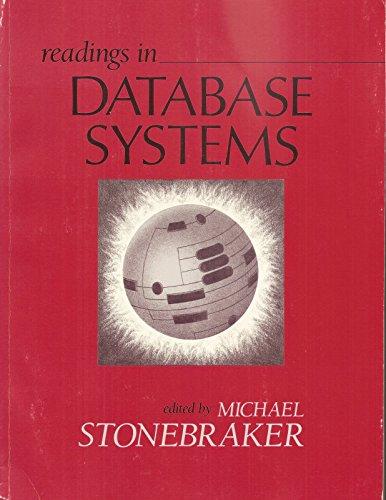Question
How to implement clone method in circularly linked list? Code below, clone method bolded: package linkedlists; /** * An implementation of a circularly linked list.
How to implement clone method in circularly linked list? Code below, clone method bolded:
package linkedlists;
/** * An implementation of a circularly linked list. * * @author Michael T. Goodrich * @author Roberto Tamassia * @author Michael H. Goldwasser */ public class CircularlyLinkedList
/** The element stored at this node */ private E element; // an element stored at this node
/** A reference to the subsequent node in the list */ private Node
/** * Creates a node with the given element and next node. * * @param e the element to be stored * @param n reference to a node that should follow the new node */ public Node(E e, Node
// Accessor methods /** * Returns the element stored at the node. * @return the element stored at the node */ public E getElement() { return element; }
/** * Returns the node that follows this one (or null if no such node). * @return the following node */ public Node
// Modifier methods /** * Sets the node's next reference to point to Node n. * @param n the node that should follow this one */ public void setNext(Node
// instance variables of the CircularlyLinkedList /** The designated cursor of the list */ private Node
/** Number of nodes in the list */ private int size = 0; // number of nodes in the list
private Node head;
/** Constructs an initially empty list. */ public CircularlyLinkedList() { } // constructs an initially empty list
// access methods /** * Returns the number of elements in the linked list. * @return number of elements in the linked list */ public int size() { return size; }
/** * Tests whether the linked list is empty. * @return true if the linked list is empty, false otherwise */ public boolean isEmpty() { return size == 0; }
/** * Returns (but does not remove) the first element of the list * @return element at the front of the list (or null if empty) */ public E first() { // returns (but does not remove) the first element if (isEmpty()) return null; return tail.getNext().getElement(); // the head is *after* the tail }
/** * Returns (but does not remove) the last element of the list * @return element at the back of the list (or null if empty) */ public E last() { // returns (but does not remove) the last element if (isEmpty()) return null; return tail.getElement(); }
// update methods /** * Rotate the first element to the back of the list. */ public void rotate() { // rotate the first element to the back of the list if (tail != null) // if empty, do nothing tail = tail.getNext(); // the old head becomes the new tail }
/** * Adds an element to the front of the list. * @param e the new element to add */ public void addFirst(E e) { // adds element e to the front of the list if (size == 0) { tail = new Node<>(e, null); tail.setNext(tail); // link to itself circularly } else { Node
/** * Adds an element to the end of the list. * @param e the new element to add */ public void addLast(E e) { // adds element e to the end of the list addFirst(e); // insert new element at front of list tail = tail.getNext(); // now new element becomes the tail }
/** * Removes and returns the first element of the list. * @return the removed element (or null if empty) */ public E removeFirst() { // removes and returns the first element if (isEmpty()) return null; // nothing to remove Node
/** * Produces a string representation of the contents of the list. * This exists for debugging purposes only. */ public String toString() { if (tail == null) return "()"; StringBuilder sb = new StringBuilder("("); Node
// CircularlyLinkedList
@SuppressWarnings({ "unchecked", "null" }) public CircularlyLinkedList
Step by Step Solution
There are 3 Steps involved in it
Step: 1

Get Instant Access to Expert-Tailored Solutions
See step-by-step solutions with expert insights and AI powered tools for academic success
Step: 2

Step: 3

Ace Your Homework with AI
Get the answers you need in no time with our AI-driven, step-by-step assistance
Get Started


